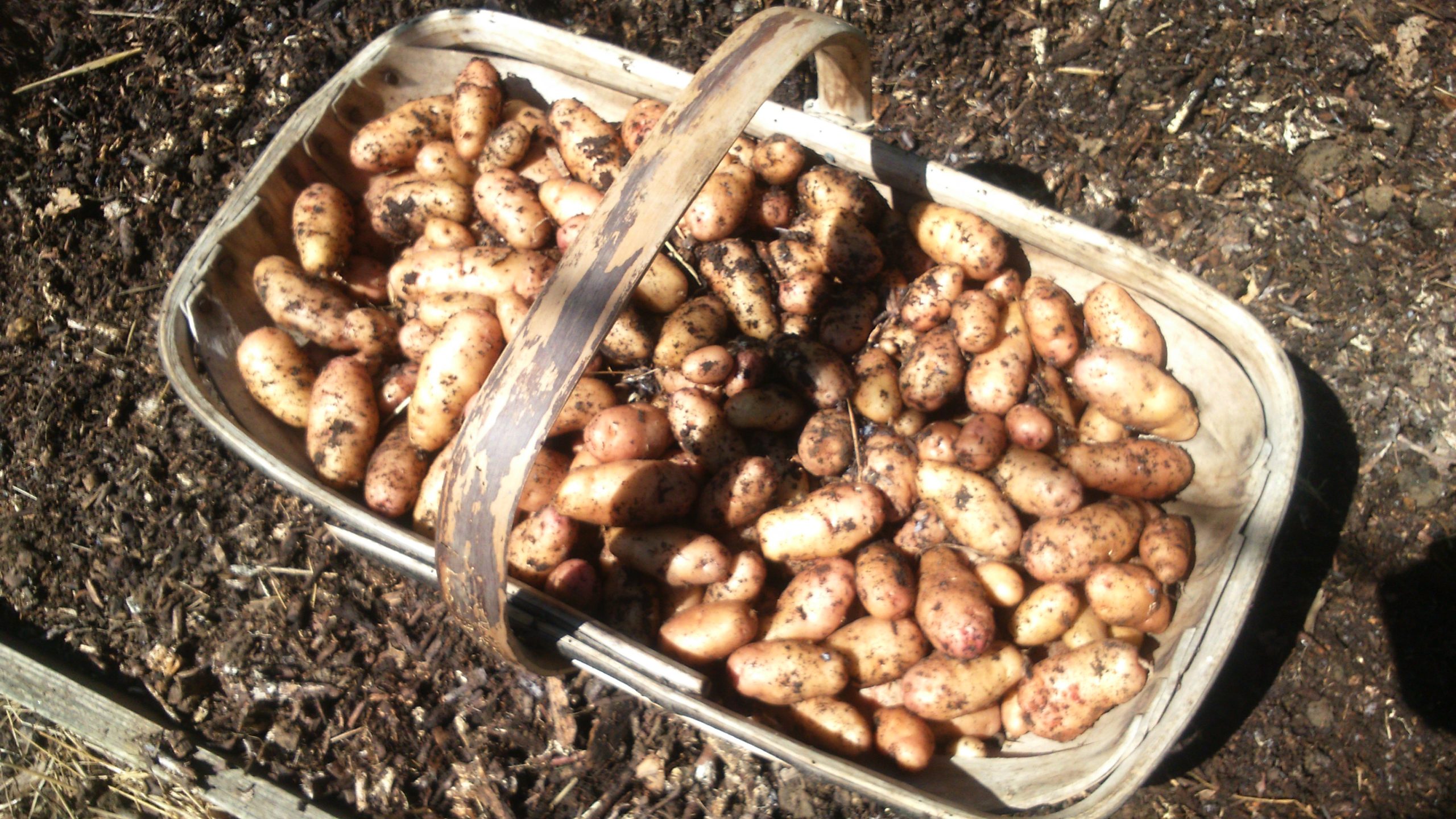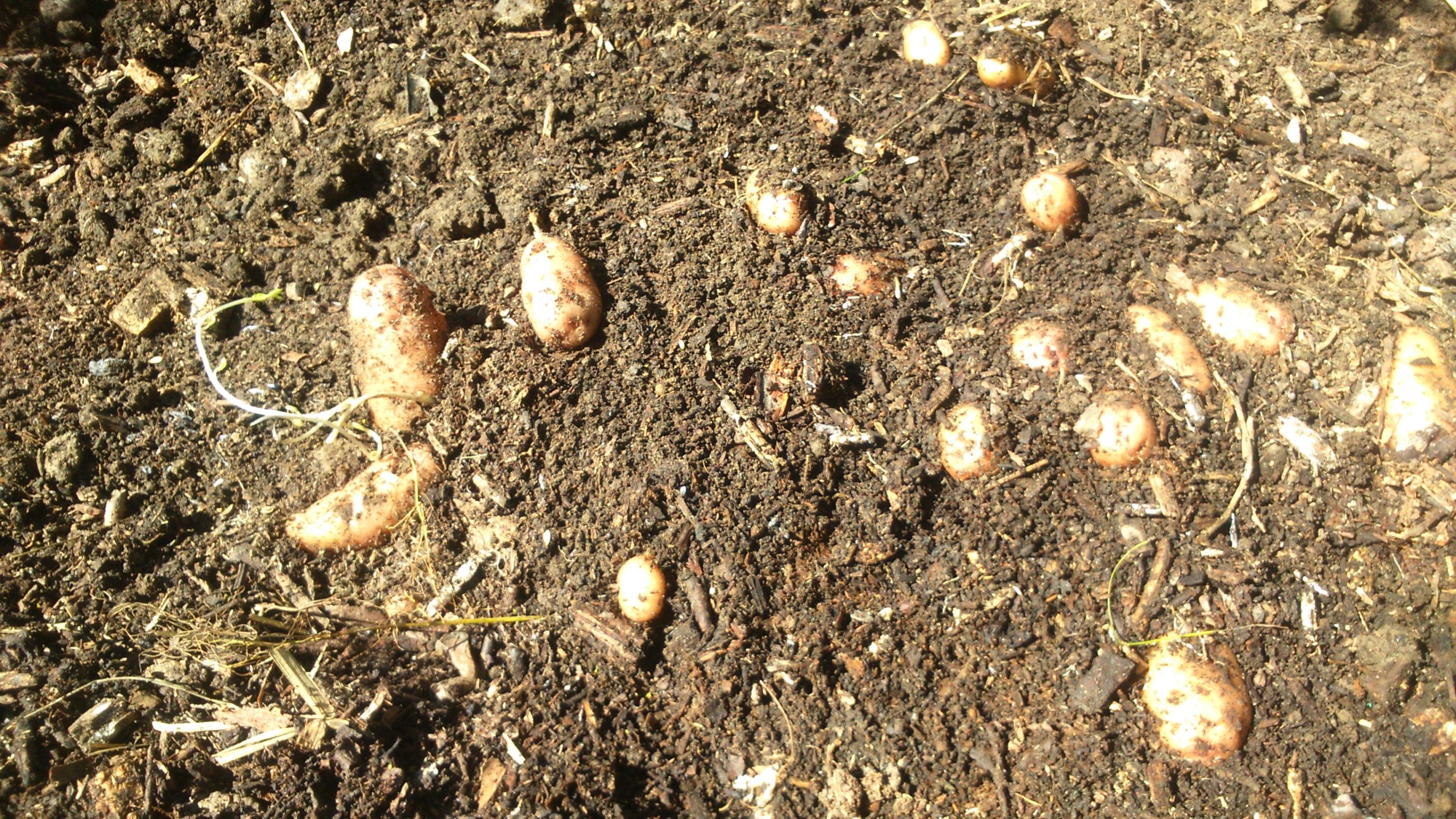It is August, and here is an update on my first no-dig experiment. I have now cropped all my potatoes and here are the results: I grew three varieties: Arran Pilot, Nicola and Anja, all first and second earlies. The Arran Pilots were planted in the dug section of the bed, where I had added horse manure. The other two were in the no-dig area where I had piled half-rotted wood chips. Instead of earthing up, I covered all three with a layer of straw about 15cm deep.
The harvest of Nicola potatoes was almost as good as Arran Pilot, which pleased me greatly. Anja was a smaller crop, but they still did well. The difference in size could have been due to the variety – I haven’t grown any of these varieties before – and anyway this was not meant to be a scientific comparison. What I noticed however was that I didn’t need to dig up the tubers – I was able to simply push the mulch aside and pick them up without disturbing the soil. The mulch had broken down well, and the thick layer of straw had helped suppress the weeds.
There was very little to do to prepare the bed for the next crop: just rake the mulch level, tread over the whole area and then transplant my brassicas, which will appreciate the firm undisturbed soil beneath.
Finally, I sowed some crimson clover between the brassicas, which started to germinate after only five days. Crimson clover has four benefits: it will provide some nitrogen for the brassicas, help to suppress weeds, attract bees and provide organic matter. Oh, and the flowers are very pretty, which is a fifth benefit. It will grow over the autumn then stay in the ground all winter. In spring I’ll chop down most of it, leaving the foliage to rot on the surface, instead of digging it in, but I’ll allow a few plants to grow on and flower next summer for the bees. Being a perennial, the chopped-down clover will probably re-grow. They should suppress weed growth during spring until the next crop goes in. I want to grow squash and courgettes in that bed next year, so the plan is to simply make holes in the clover cover, and plant through it.
JILL KAYE 30/08/20


